SUMMARY
This is AI generated summarization, which may have errors. For context, always refer to the full article.
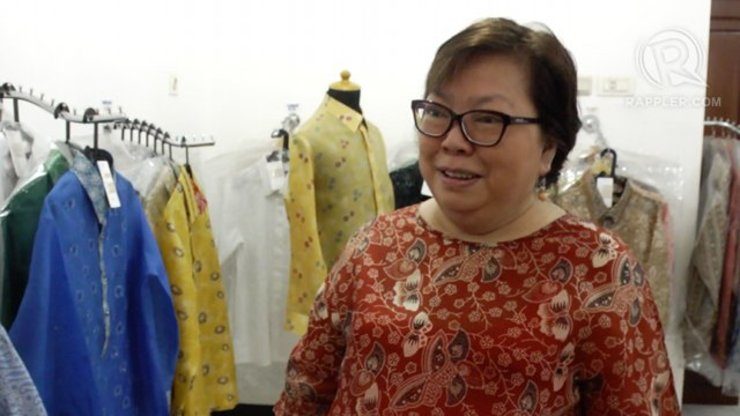
JAKARTA, Indonesia – Want a colorful Barong Tagalog for a change? How about dyed design but on a lightweight, sheer material? Artsy and skillful Filipinos provide the best of both worlds through an exceptional Asian fashion fusion: the Barong Batik.
Blending the trends and cultures of the two countries they call home, Filipinos working in Indonesia came up with an apparel that weaves Filipino ingenuity with Indonesian artisanship.
“It’s a combination of the Filipino jusi, which is used for our national dress Barong Tagalog, and I used the process, the motif of batik, and I call it Barong Batik,” Thelma Victorio, co-founder of Barong Batik Indonesia, told Rappler.
Along with partner and chief designer Freddy Mercado, Victorio experimented with the material from the Philippines using Indonesia’s iconic dyeing technique. Over the years, the mix turned into a premier brand that Filipinos and Indonesians wear and love.
“Simply because the Indonesians think the batik is all about brown, black, gray, the dark colors. So when they see the batik motif in lemon zest, pink salmon, burnt orange, they say, ‘Wow, our batik looks very elegant!’”
To view the Barong Batik designs for both men and women, watch this video:
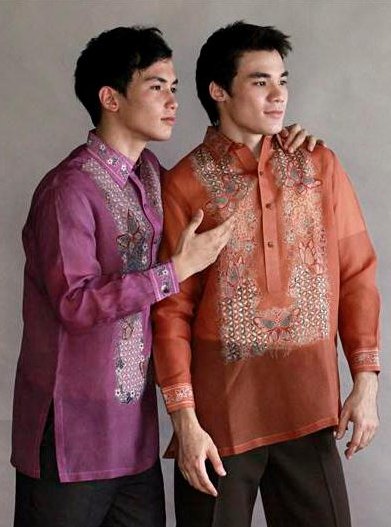
The batik that stands out
An investment officer based in Indonesia since 1988, Victorio ventured into becoming what she coins as another type of CFO: “chief fashion officer.” It all started in 2005 when she and Mercado went to a favorite hangout of both Filipinos and Indonesians: the mall.
“Freddy saw an old woman doing the batik process. He came up with a question: ‘Why don’t we bring this jusi, bring a sample to this lady?’ The experiment went on and on to make sure that in the dyeing, there’s no bleeding, that the color will not fade. It took us two to 3 years.”
The hobby turned into an enterprise when Mercado showed up at a Philippine Independence Day celebration in Jakarta and stunned the guests with his unique outfit. After repeated inquiries on where he got it, he took one look at Victorio and responded, “We are selling it.”
Since then, the pair brings in jusi from Laguna province in the Philippines, a combination of pineapple fiber, silk, and polyester. Artists in Pekalongan, Central Java then do painstaking work for weeks, hand-drawing intricate patterns using a pen-like device called tjanting or using wooden or copper stamps called caps with hot melted wax as the “ink.”
The business became an even bigger hit when the old-fashioned batik experienced a revival, thanks to one world-famous endorser: Indonesian President Susilo Bambang Yudhoyono.
In 2009, Yudhoyono asked Indonesians to wear batik every Friday, and declared October 2 National Batik Day after the UNESCO included the Indonesian batik in its Intangible Cultural Heritage list.
“That became the turning point of our Barong Batik,” said Victorio. “Everyone wanted to be different from the other batik, right? The silk and the cotton. So the Barong Batik became popular.”
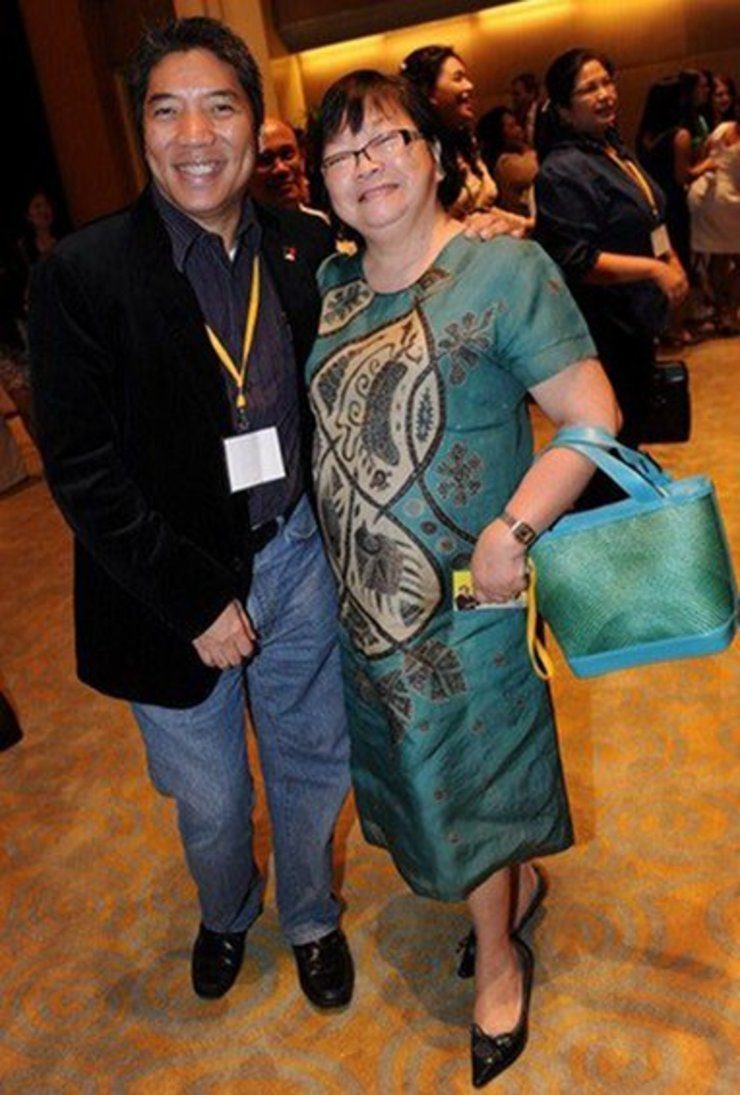
‘It’s a piece of art’
Today, the who’s who among Indonesians and Filipinos in Jakarta are the models of Barong Batik. One of them is Indonesian businessman and TV industry pioneer Peter Gontha, who gives Barong Batik pieces as gifts to politicians and visiting royalty. Ambassadors, ministers and wedding guests also put on the creations.
Victorio said the market is inevitably middle and upper class because of the craftsmanship that goes into each Barong Batik. The average piece that takes 4 to 6 weeks to make costs IDR 1.1 million or about P4,000 ($92).* Batik tulis, the hand-painted piece completed in 8 to 10 weeks, goes up to P10,000 ($230) to P12,000 ($276).
Buyers though are sure to get a unique design, with only 4 Barong Batik pieces made in exactly the same motif and color to cater to Indonesian families who customarily come in the same dress.
“We do not really sell it in large quantities because I tell my clients, ‘You are not buying a piece of dress. You are buying a piece of art because it’s really an art,’” Victorio said.
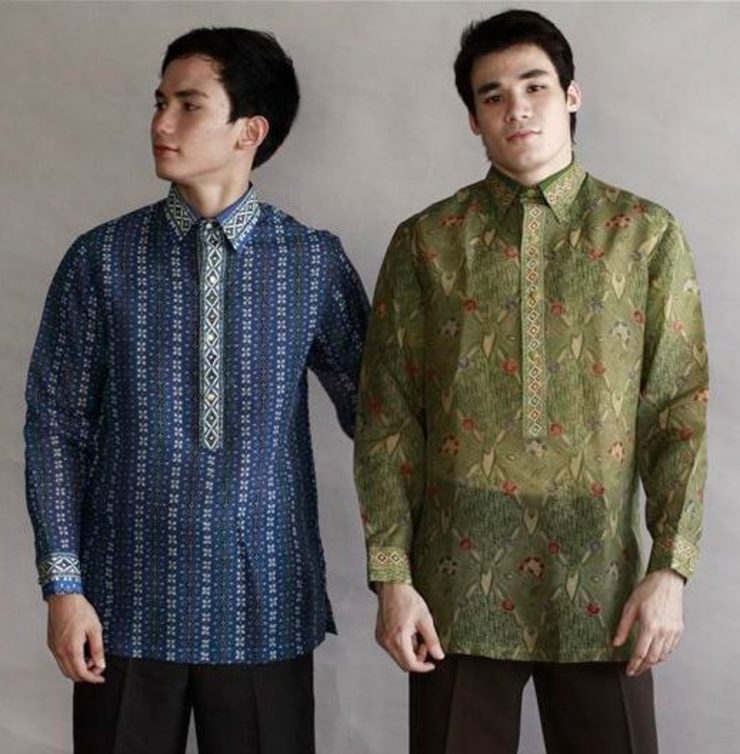
Barong Batik is a favorite at the annual exhibit of the Metro Department Stores chain held at the Plaza Indonesia mall, even becoming last year’s top selling batik brand.
It does not rent a permanent mall space though, cutting the price to only a third or a fourth of that of other businesses’. Instead, Barong Batik is located in a showroom in South Jakarta, and at a tailor shop in the Philippine financial district of Makati.
“We do not advertise it but we create curiosity and people will really come. My most powerful medium of selling is my Blackberry, my mobile phone.”
Still, word gets around. Victorio said her business lives by the philosophy in the book Purple Cow: to create a remarkable product that will be known through word of mouth.
“When people see it worn by another one, it will really catch attention. They ask, ‘Mas, mas (sir), this is batik but it’s not batik, right?’ We say, ‘Yeah, we call it Barong Batik.’”
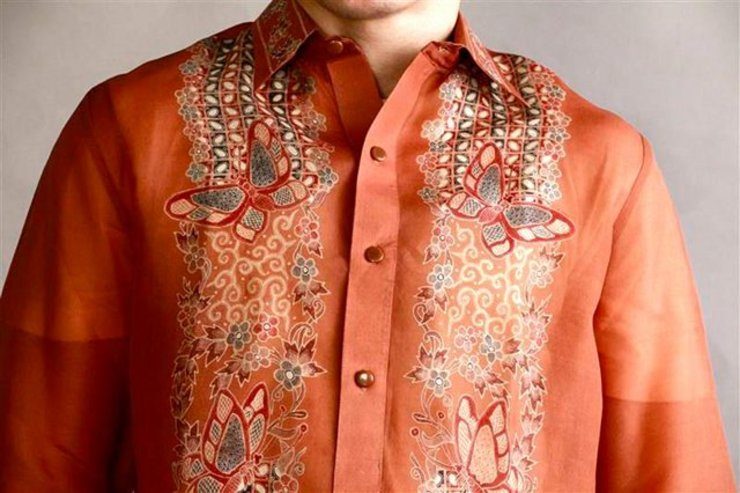
Beyond Indonesia and the Philippines
The owners of Barong Batik are not stopping in Philippine and Indonesian shores. Their Indonesian partner from Central Java, fourth-generation batik entrepreneur Romi Oktabirawa, plans to bring the business to Singapore.
“Our customers will really include different nationalities already. Freddy and I are very happy with the outcome that Indonesians love them. So if we do come out with a boutique, I think it will be first in Indonesia and then in the Philippines,” Victorio said.
Yet she and Mercado want more of their fellow Filipinos to appreciate batik, sometimes relegated to a daster or casual garb only worn at home in the Philippines. After all, theirs is not just a business of friends but one promoting a national symbol.
“We take pride in selling our Barong Batik and people who wear it, I think they are proud to wear the Barong Batik because they stand out. Sabi ko nga sa Tagalog, plus pogi points. Pogi ka na, mas pogi ka pa ‘pag naka-Barong Batik ka,” Victorio quipped. (As I say in Tagalog, it adds appeal. You’re already handsome but you’ll look more handsome in Barong Batik!) – Rappler.com
To inquire about Barong Batik, visit the showroom in Indonesia at Jl Alam Asri VIII SH03, No 29 Pondok Indah Jakarta, T 765 3721 or contact Freddy (0816980639) or Adinda (+628111892060). In the Philippines, check out Felipe and Sons Barberdashery at Mezzanine A, LPL Mansion, 122 San Agustin Street 1227 Makati and contact Paulo or Josie at +63917 2423963.
*$1 = P43.49
Add a comment
How does this make you feel?
There are no comments yet. Add your comment to start the conversation.